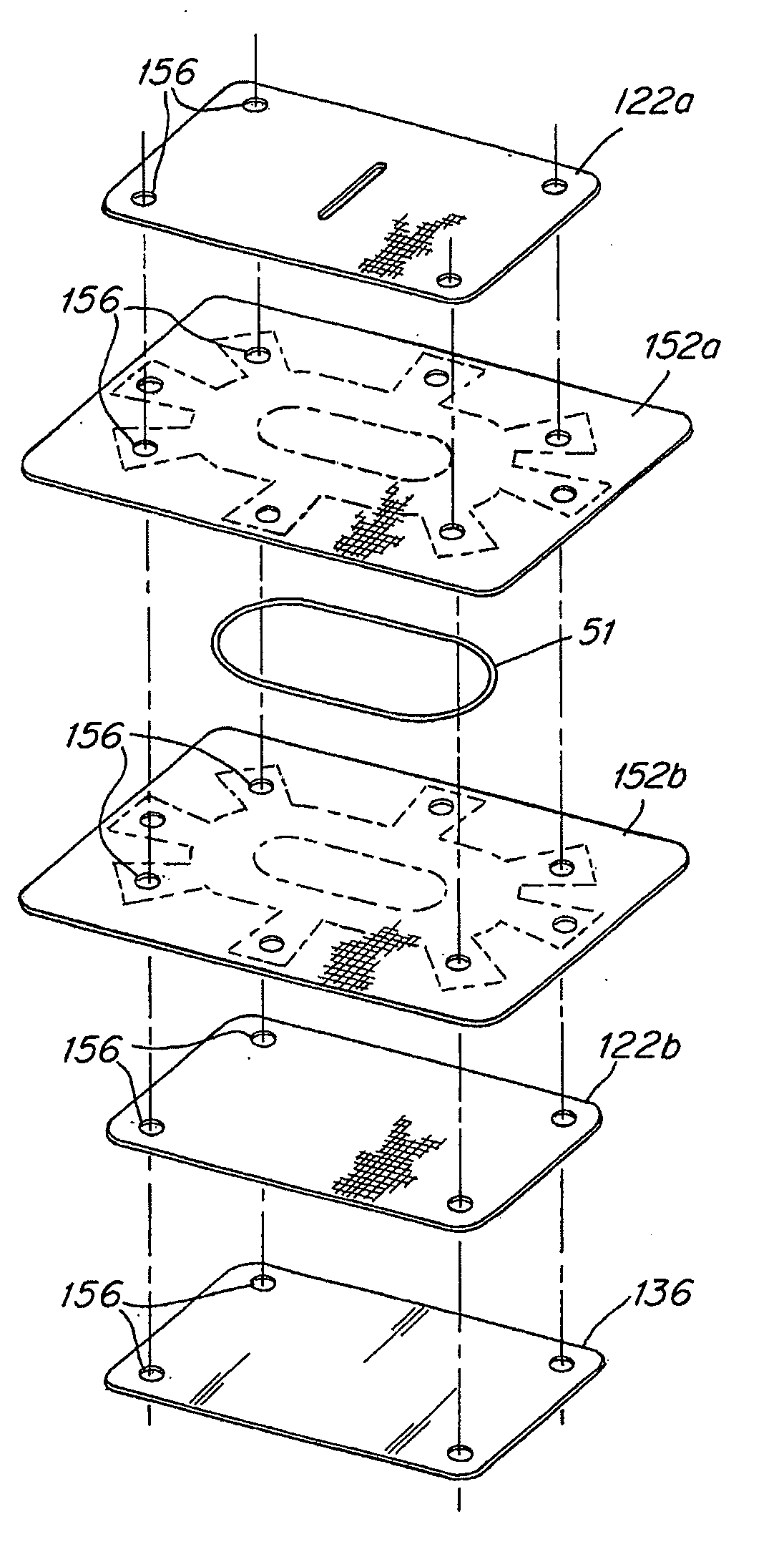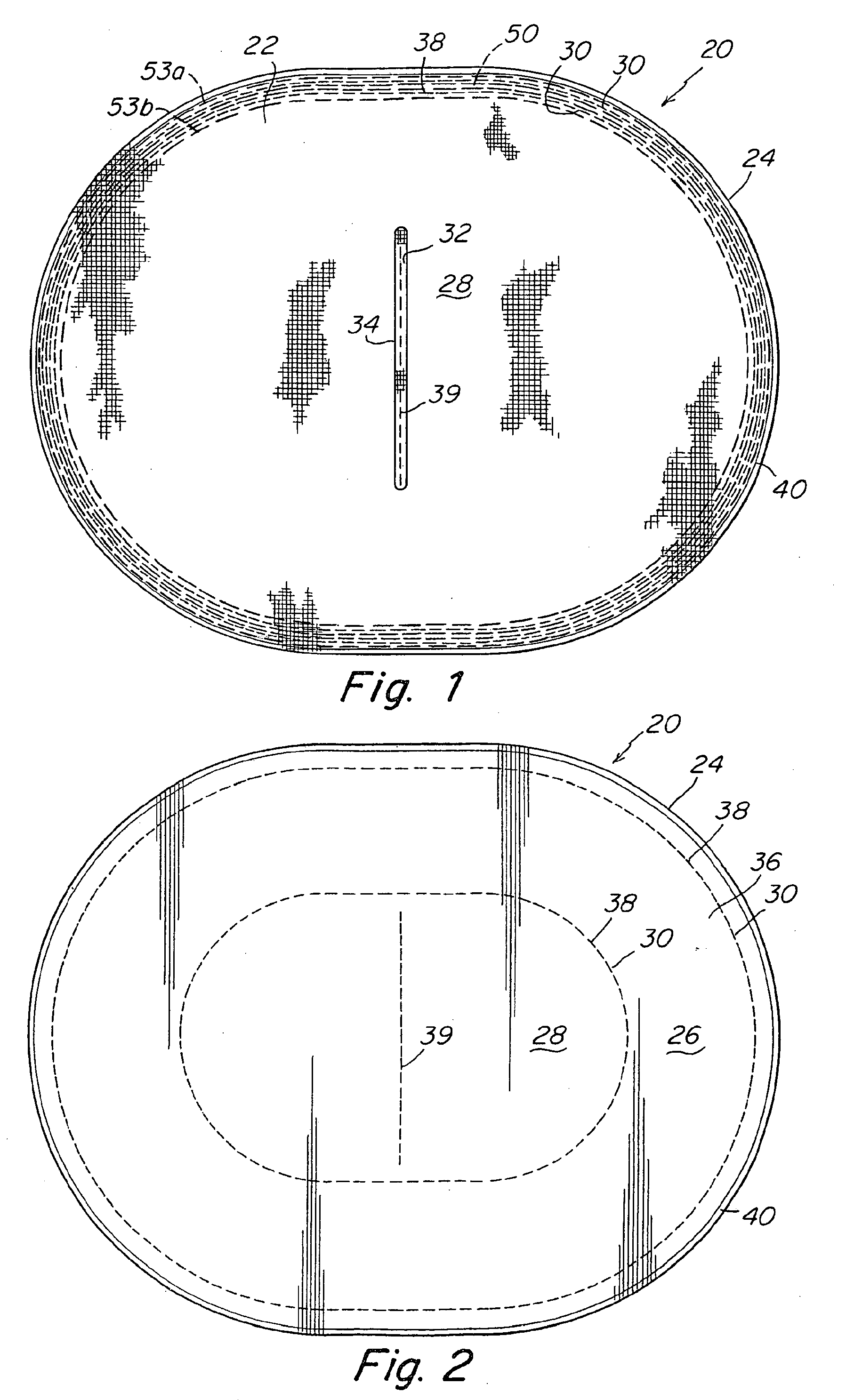Implantable prosthesis
a prosthesis and implant technology, applied in the field of prosthesis, can solve the problems of undesirable tissue attachment between the mesh and the tissue or organ, unsatisfactory postoperative adhesion, etc., and achieve the effect of promoting tissue or muscle growth and facilitating implantation
- Summary
- Abstract
- Description
- Claims
- Application Information
AI Technical Summary
Benefits of technology
Problems solved by technology
Method used
Image
Examples
Embodiment Construction
[0020]An implantable prosthesis is provided for repairing an anatomical defect, such as a tissue or muscle defect, that promotes tissue of muscle ingrowth into the prosthesis and subsequently strengthens the area of the defect. The prosthesis is easy to manipulate and may be designed to minimize the incidence of postoperative adhesions between a portion of the prosthesis and surrounding tissue or organs. In addition, the prosthesis strikes a balance between being sufficiently rigid to aid in manipulation and deployment in the area of desired coverage and sufficiently flexible to be acceptable to both the surgeon and the patient. Further, the prosthesis may be constructed to allow it to be provisionally held in place at desired locations until sufficient tissue ingrowth occurs.
[0021]Embodiments of the prosthesis may be particularly suited for the repair of various soft tissue or muscle wall defects, including, but not limited to, inguinal and ventral hernias, chest or abdominal wall ...
PUM
 Login to View More
Login to View More Abstract
Description
Claims
Application Information
 Login to View More
Login to View More - R&D
- Intellectual Property
- Life Sciences
- Materials
- Tech Scout
- Unparalleled Data Quality
- Higher Quality Content
- 60% Fewer Hallucinations
Browse by: Latest US Patents, China's latest patents, Technical Efficacy Thesaurus, Application Domain, Technology Topic, Popular Technical Reports.
© 2025 PatSnap. All rights reserved.Legal|Privacy policy|Modern Slavery Act Transparency Statement|Sitemap|About US| Contact US: help@patsnap.com



